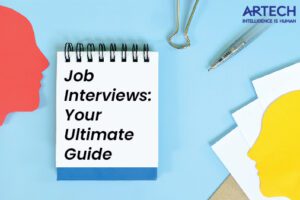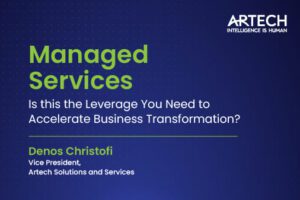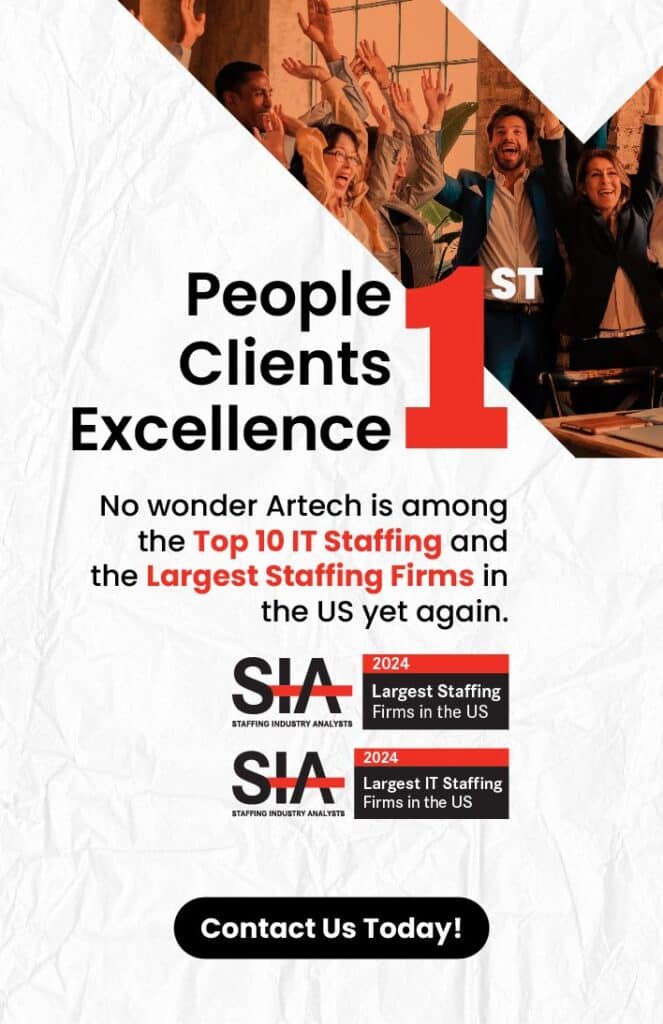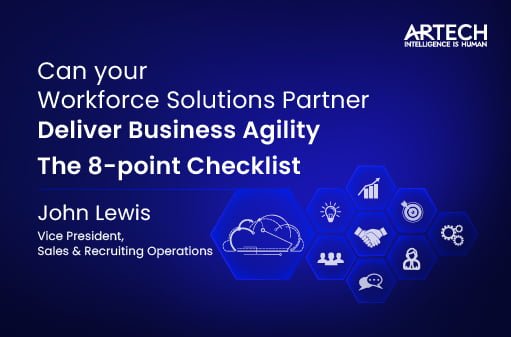
As we head into 2023, the talent shortages of this year have morphed the labor market into a real beast… a shapeshifter that requires constant reaction to the changing circumstances and proactive planning to achieve results.
With businesses constantly planning and pivoting to stay ahead of disruptions, the demand for workers is shifting at a super-accelerated pace, not just in terms of numbers but also in terms of skill sets required and the budgets available.
Yesterday’s headlines were about the Great Resignation; today, they are screaming about hiring freezes by the tech giants. CEOs cite worker shortages as a top concern, yet the economic downturn has them announcing layoffs. Reports of technology companies reducing headcount are interspersed with accounts of talent shortages as the most significant barrier to adoption of emerging technologies.
The demands of the workforce are shifting too. Remote work, Gig economy, Quiet Quitting, the Great Renegotiation … a whole host of new terms have sprung up to reflect the changed aspirations of workers in a post-pandemic world.
A strong, outcome-focused workforce partner is a critical asset for companies seeking solutions to handle this fluid backdrop – an ally who collaborates with the organization to plan, identify, procure, deploy, and engage resources required to get work done. A true partner, this workforce provider facilitates business agility by providing talent on demand and through delivery models customized to your evolving needs.
Now, chances are you already have a workforce vendor in place.
However, is your current provider adequately geared to partner with your organization in implementing operational, strategic, and tactical workforce planning in a post-pandemic world?
Can it offer you the effective, flexible, and creative solutions required to redesign and rethink rapidly changing workforce requirements? Can it deliver the business agility you need? Can it reconfigure on demand … quickly and cost-effectively?
The 8-Point Checklist For Choosing Ideal Workforce Solutions Partner
Here is an 8-point checklist highlighting the attributes of the ideal workforce partner who can help you plan and pivot through all this turbulence and provide the real support you need to stay ahead of this tumultuous business environment.
-
Expertise, Experience & Scale
In a world where all workforce providers offer cookie-cutter options, you need to identify a partner with the muscle to deliver on their promises while remaining flexible enough to adapt to your ever-changing business needs.
Strong expertise, deep domain experience, institutional strength and scale, and proven reliability are your best guides here. Assess whether your workforce provider demonstrates strengths in these vital aspects.
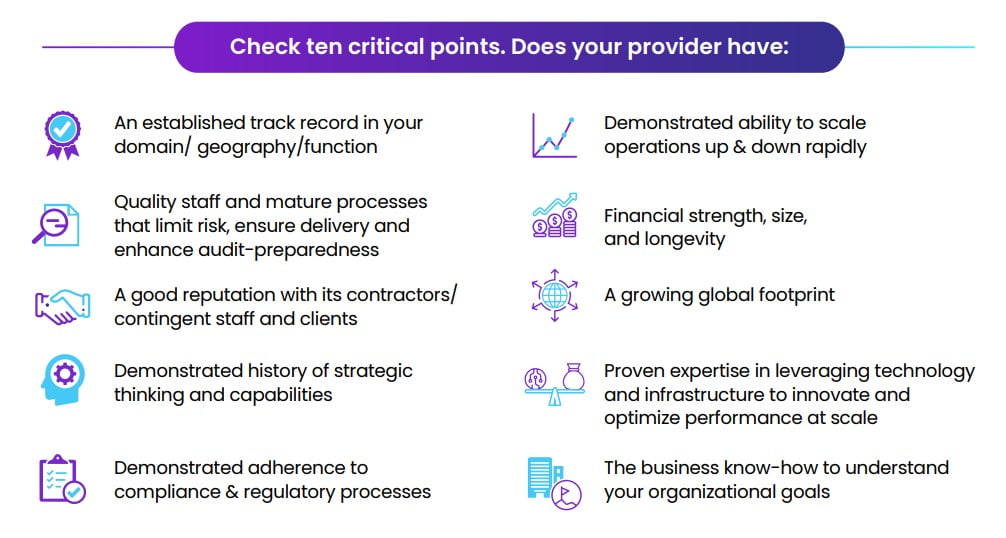
-
Outcome-first approach
Traditional workforce solution providers focus on roles: “Whom are you looking to hire – backend engineer, data scientist, support desk staff …?”
However, the ideal workforce partner puts outcomes first. The question becomes: “What is the outcome (or results) the business needs to achieve?”
Based on the answer, the ideal workforce partner objectively defines the skill sets required to achieve the desired outcome, creates a strategic plan to procure those skills, and ensures that the selected approach aligns with your broader organizational goals. Once outcomes are deconstructed in terms of the capabilities, your partner’s outcome focus enables it to move beyond the one person-one job model and implement a much more effective approach to workforce planning.
Once outcomes are deconstructed in terms of the capabilities, your partner’s outcome focus enables it to move beyond the one person-one job model and implement a much more effective approach to workforce planning.
-
Ability to curate & tap passive, active, and hidden talent
US CEOs ranked labor shortages as the number one external threat to business in 2022 in a survey carried out by the Conference Board at the beginning of the year. (Globally, it was placed in the number three slot). And while inflation has taken over the top spot since, talent shortage is still listed as one of the most significant challenges in most studies.
The talent gap is even more pronounced in the tech world. The 85.2-million-open-tech-positions-by-2030 number has popped up on everyone’s newsfeeds by now. And even currently, studies show that 3 out of 4 companies face difficulties finding the tech talent they need to drive their business forward.
Given this backdrop, the ability to cultivate, curate and harvest talent pools becomes an essential qualifier for the ideal workforce partner.
Typically, there are three talent pools recruiters can access.
- Active
The open-to-work status folks who are actively looking for their next great opportunity - Passive
The people who are not actively looking at job postings or pursuing open advertised opportunities. They are comfortable in their current positions and will need a compelling reason to change. - Hidden
These candidates tend to get screened out by AI. Often, these candidates have an irregular resume – a gap in employment, lack of college degree, immigrant status – which leads to the algorithm weeding them out, despite their suitability for the role.
While most workforce providers rely on active talent pools, your ideal partner should be able to leverage technology and human intelligence to tap the passive and hidden pools as well.
It should combine technology and manpower to reach and engage targeted talent… at scale… with high speed and efficiency.
In terms of tangible attributes, this translates into a partner who provides:
- Dedicated recruiters focused on skill sets and geographical locations aligned to your specific needs.
- Engagement with online niche communities and social media platforms to establish ongoing relationships with passive and active candidate pools
- Access to an extensive database of curated candidate information, collected over the years, that is unique to the provider and gives ready access to a community of passive workers open to hearing about your opportunity.
- Deep domain and skill-set expertise that allows them to leverage candidates across multiple assignments and clients
- A digital approach that leverages best-in-class technology tools and data-driven strategy formulation to optimize workforce recruitment and candidate engagement. (Covered in detail in the next point)
- Human intelligence to temper technology so that hidden pools are not overlooked.
- Active
-
Digital tools & technology wielded with human intelligence
 Like every other sector, the workforce domain, too, has seen huge technological innovation. Digital tools, data-driven models, AI-driven forecasting, cognitive automation … there is a mind-boggling array of choices out there.Most good workforce providers use these tools.The best workforce providers, though, leverage technology in combination with human intelligence to generate consistent, high-quality results. They are adept at aligning the right technologies at the right time to optimize their effectiveness.They have the expertise to assess which tools will benefit their clients most. Their technology stack is carefully assembled to provide effective results, visibility, service, and scale, while controlling operating costs.
Like every other sector, the workforce domain, too, has seen huge technological innovation. Digital tools, data-driven models, AI-driven forecasting, cognitive automation … there is a mind-boggling array of choices out there.Most good workforce providers use these tools.The best workforce providers, though, leverage technology in combination with human intelligence to generate consistent, high-quality results. They are adept at aligning the right technologies at the right time to optimize their effectiveness.They have the expertise to assess which tools will benefit their clients most. Their technology stack is carefully assembled to provide effective results, visibility, service, and scale, while controlling operating costs.Let us consider an example where the provider leverages organizational expertise and a digital approach in tandem to elevate the workforce procurement process.
Company A approaches the workforce provider to meet its demand to deliver certain business outcomes in a specific geography. The provider uses its expertise to translate the outcomes into skill sets, competencies, and prior experience to arrive at a fully developed workforce requirement.
Requirement in place, the provider uses a data-driven approach to inform and guide its delivery plan. The organization’s internal data, collected over years of operation, and unique expert human insights are merged with 3rd party market data available via digital tools to understand aspects such as:
- Competitive intensity for a particular job or skill
- Employers in the local market competing for the same resource
- Common attributes of potential candidates – wage, education, prior employers, and more
- Skills, certifications, and even demographic profile data
The provider’s expertise in the domain area then allows it to refine its search further, translating tasks required for the position into key competencies that can be demonstrated through experience obtained on prior jobs and identifying the companies where they may have utilized these skills recently.
The result is a comprehensive sourcing strategy that generates qualified interest in your opportunity by targeting desired worker populations with messaging that promotes the benefits to the worker.
An effective delivery approach emerges. If the target candidate profile is rated as a very-difficult-to-recruit, low- availability skill-set, the provider may recommend an accelerated, persuasive approach that targets passive and active candidates or even suggest flexible and remote working options to increase the size of the candidate pool.
An intelligent, comprehensive technology stack equipped with critical capabilities – applicant tracking systems, 24×7 automated candidate harvesting technology, detailed process tracking and reporting capabilities, communication workflow systems – and established processes would be used to execute the delivery plan.
Automated communications workflows, supplemented with direct human outreach and targeted campaigns by the provider’s talent management team, would be used to reach out to external candidates and potential targets within the provider’s internal system with great speed and efficiency.
Objective technical and soft skill screening… both processes and tools… would be used to validate skills, and Subject Matter Experts would conduct professional interviews to validate soft skills and overall fit to your environment. Automated systems would track metrics, provide visibility, and maintain connection with the candidates at every stage, including post-recruitment.
-
Comprehensive Offering, Workforce Engagement
 As the example above illustrates, the ideal workforce partner should be a present and active participant throughout the journey from planning, to implementation, to engagement, to assessment – offering the right solutions to the right business challenges at the right time.
As the example above illustrates, the ideal workforce partner should be a present and active participant throughout the journey from planning, to implementation, to engagement, to assessment – offering the right solutions to the right business challenges at the right time.So, assess if your workforce provider has the breadth of capabilities and competency to deliver a complete range of needed services that assist with each stage of workforce development.
From market-informed planning and sourcing, through candidate engagement and selection, and continued care and support of the deployed worker while on assignment – a combination of technology and human interaction within a well-orchestrated framework is required to deliver a consistent and effective talent delivery program.
Check the provider’s capability for every stage of the journey.
When planning, does the provider undertake detailed demand analysis to anticipate your needs? Do they assess current labor market conditions, competitive pressures, and availability and cost of workers? With labor in short supply, especially within niche skillsets, and mounting mission-critical work waiting on the right worker to perform the tasks, predictable output from your workforce partner is critical to your business agility and meeting the demands of your customers. Validate your workforce partner’s process, frequency, information sources, and recommendations to ensure you will be ready and able to meet your business objectives.
When it comes to sourcing and recruitment, as discussed earlier, you need to evaluate the provider’s ability to leverage tools, processes, technology, and human intelligence in tandem, to deliver optimum results quickly. Competition for workers has never been greater, so getting your opportunity presented to your ideal worker ahead of your competitors is vital to securing the worker and maintaining business agility.
The best providers will have the means and methods to monitor and measure output… at each stage… to identify opportunities for spot corrections and ongoing continuous improvement.
Post placement, your workforce partner needs to action constant, continuous contractor engagement to ensure that the talent they provide feels supported and cared for during the assignment and has a clear understanding of who their employer is.
The ideal partner takes a comprehensive approach to delivering workforce engagement and contractor care. Healthcare benefits, online skilling and training opportunities, specialists to resolve worker questions and issues, and managed redeployment to their next assignment are just a few ways your workforce partner could provide workers with a career platform and stability while assigned to your company.
-
Collaborative, Flexible, Scalable Solutions
Does your provider work collaboratively with you to provide solutions customized to your specific needs?
Most organizations offer value propositions that prioritize their existing products and services. However, a true workforce partner considers your inputs to construct delivery solutions that provide specific value exactly where you need it. It develops engagement models that align with your business rules and objectives and facilitates easy and timely interactions between 4required team members.
What you need, how you need it, when you need it, and the metrics and SLAs used to evaluate outcomes … all key aspects must be defined collaboratively, in tune with your requirements, work environment, and business circumstances.
And since flexibility and scalability are critical elements required to navigate the turbulent scenario today, check if the delivery model provides for rapid and easy change in scale and demand.
The ability to ramp up to meet peak demand is as important to your business agility as the ability to deliver against typical volumes. Preserving consistency and service quality while quickly expanding to meet the growing demand is a vital consideration when selecting your workforce partner.
-
Focused Delivery Model, Mature Governance & Transparency
To ensure that the promised services are delivered to the level required, an ideal workforce partner implements a holistic, multi-level delivery model that targets value creation across all three collaboration levels: planning, execution, and resources.
At the planning level, the ideal workforce partner provides mature governance by deploying senior resources to steer and set strategic direction for the program. These resources, typically belonging to the executive management layer, have the business acumen and experience to understand client needs and desired outcomes. They are empowered to drive alignment of resources and support within their own organizations to meet client expectations without hesitation.
Collaboration at the execution level entails working within program rules of engagement and compliance standards to provide the unique solutions and services required to accomplish your goals.
From the initial intake of a particular job order… to coordinating selection activities… to managing back-office functions like Accounting and Human Resources, your workforce partner must have a seasoned, professional management team overseeing well-defined internal processes and methodologies that deliver predictable results in alignment with your organizational policies and objectives.
Resources are the underlying layer that sets up the base for the planning and execution level collaboration. The quality of the people that will serve and advocate for your needs within the provider’s own organization is vital to delivery success. Also, the resources and tools they are provided to work with will impact the results they can deliver.
So, assess if your workforce partner provides experienced, well-trained, customer-centric people working with state-of-the-industry processes and technologies. Understanding the provider’s people, culture, processes, methodologies, technologies, and tools upfront, will enable you to evaluate their potential as a workforce delivery partner for your organization.
Continuous communication, full performance visibility, and ongoing course correction are other essential components of a mature governance structure. They should form the bedrock for both day-to-day interactions and delivery challenge scenarios.
-
Diversity, Equity & Inclusion (DE&I) Focus
 While most workforce providers recognize the need to deliver DE&I-focused solutions, often their efforts are superficial and lack truly impactful results – noble intentions reduced to mere platitudes.
While most workforce providers recognize the need to deliver DE&I-focused solutions, often their efforts are superficial and lack truly impactful results – noble intentions reduced to mere platitudes.While most workforce providers recognize the need to deliver DE&I-focused solutions, often their efforts are superficial and lack truly impactful results – noble intentions reduced to mere platitudes.
Where these efforts are deliberate and well-orchestrated, your provider should be able to provide data demonstrating their impact. To claim effectiveness, their results must beat the local labor market’s status quo, contributing more diverse candidates, as percentage of submittals and hires, than the local demographics for that particular skill/role. Reported EEO data, in summary form, is an excellent source of performance data in this regard.
Providers whose workforce deployments consistently score higher than the market averages on the DE&I front are executing sourcing and recruiting strategies designed to better attract a full range of workers from all categories and reduce unconscious bias in their screening and candidate qualification activities.
Important points to consider – Does your provider proffer DE&I delivery as a key performance metric? Is it strong only in certain areas, or does the workforce provided by it have representation across multiple diversity categories? Is diversity an organizing principle for the provider?
And, most importantly, does your workforce partner walk that DE&I talk itself?
Summary
The workforce has changed and to remain agile, you and your workforce provider too must change. Eight key criteria can help you identify a strong workforce partner who can provide you effective solutions to stay ahead of the constantly shifting talent demand scenario.
You need to assess if the workforce solutions provider:
- Demonstrates adequate expertise, experience & scale
- Follows an outcome-focused approach
- Displays the ability to curate and tap passive, active, and hidden talent pools
- Leverages digital tools & technology with human intelligence
- Provides a comprehensive offering, complete with workforce engagement
- Offers collaborative, flexible, scalable solutions
- Follows a focused delivery model, and mature governance & transparency practices
- Focuses on diversity, equity & inclusion
Only if your workforce provider scores high on all these factors can it become a true partner that delivers the business agility you need.
Discover Workforce Solutions from Artech
From vision to delivery excellence, Artech Workforce Solutions enable clients across the globe to achieve the business outcomes they need intelligently.
To know more about how our solutions can add value to your organization, write to us at nbd@artech.com
This content is crafted with care by Artech Staff Authors. While it reflects our commitment to quality and accuracy, please note that it is not authored by industry experts. We aim to offer valuable and engaging information, and for more specialized or technical advice, we recommend consulting with professionals in the relevant field. If you have any concerns or require further assistance, please contact us at support@artech.com. Thank you for trusting Artech as your source of informative content.



